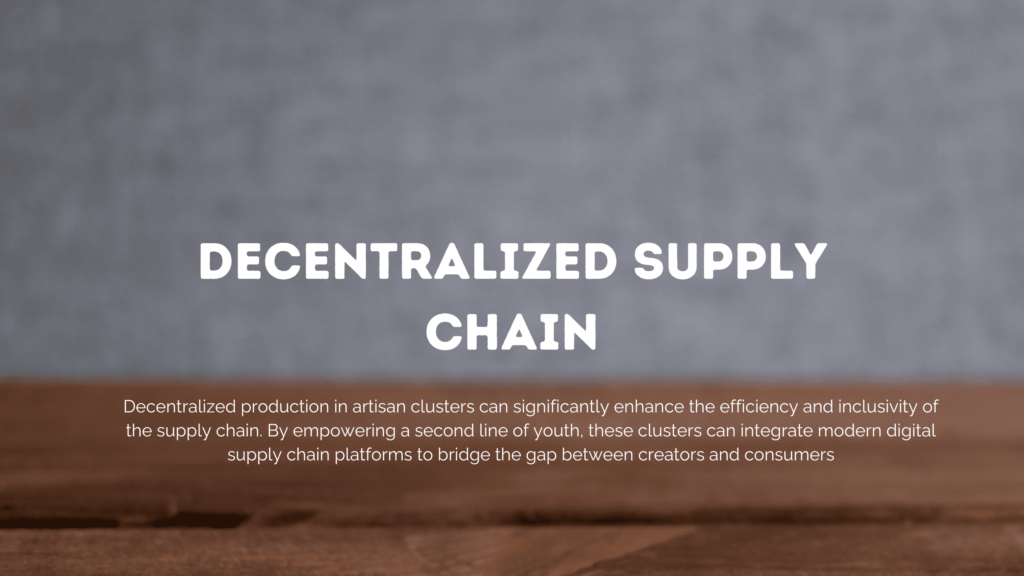Decentralized Supply Chain

Decentralized Supply Chain
- Decentralized production in artisan clusters can significantly enhance the efficiency and inclusivity of the supply chain. By empowering a second line of youth, these clusters can integrate modern digital supply chain platforms to bridge the gap between creators and consumers.
Vision:
- To enable decentralized production and enhance the artisan economy by equipping youth with digital tools and creating a seamless creator-to-consumer supply chain.
Key Components of the Project
- Identification and Mobilization
o Objective: Identify artisan clusters and youth who can form the second line of supply chain operators.
o Activities:
Conduct surveys and map artisan clusters across selected regions.
Partner with local organizations, educational institutions, and NGOs for outreach.
Organize community mobilization drives to engage and motivate youth.
2. Skill Development
o Objective: Train youth in digital tools, supply chain management, and customer engagement.
o Activities:
Develop training modules covering:
Digital cataloging and inventory management.
Basics of e-commerce platforms and marketplace operations.
Customer relationship management (CRM) software and communication tools.
Collaborate with tech partners for hands-on training on digital platforms.
Conduct workshops on soft skills like negotiation, presentation, and problem-solving.
3. Platform Creation
o Objective: Establish a robust digital supply chain platform to connect artisans
with consumers.
o Activities:
Design and deploy a user-friendly platform with features like:
Product catalog and inventory updates.
Order management and tracking.
Payment gateway integration.
Customer feedback and review system.
Ensure the platform supports regional languages and is accessible via mobile devices.
Implement AI/ML tools for demand prediction and inventory optimization.
4. Integration and Decentralization
o Objective: Decentralize production and distribution to ensure minimal logistics costs and maximum outreach.
o Activities:
Create micro-fulfillment centers within clusters for inventory storage.
Set up regional hubs for quality control and dispatch.
Train youth to manage these centers and ensure smooth operations.
Collaborate with local transport networks for efficient last-mile delivery.
5. Marketing and Consumer Engagement
o Objective: Enhance visibility and create direct consumer connections.
o Activities:
Launch social media campaigns showcasing the artisans’ stories and craftsmanship.
Integrate digital storytelling into the platform to connect consumers with creators.
Organize virtual exhibitions and live craft-making sessions.
Develop loyalty programs to retain customers and incentivize repeat purchases.
6. Monitoring and Evaluation
o Objective: Ensure continuous improvement and impact assessment.
o Activities:
Implement a real-time data dashboard to monitor platform performance.
Collect feedback from artisans, youth operators, and consumers.
Conduct regular review meetings to address challenges and adapt strategies.
7. Sustainability and Scalability
o Objective: Build a self-sustaining model that can scale across regions.
o Activities:
Establish partnerships with government bodies and CSR initiatives for funding and resources.
Create a subscription-based revenue model for artisans to access the platform.
Develop certification programs to ensure product authenticity and quality.
Expand the platform to include new clusters and product lines.






